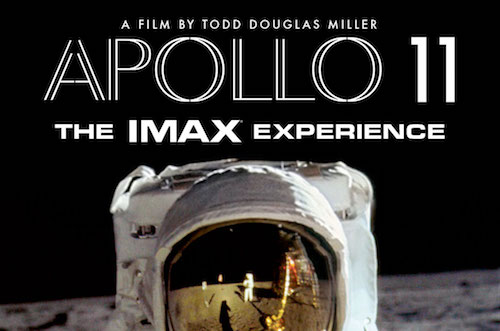« Desert Fury | Main | Monsieur & Madame Adelman »
March 01, 2019
Apollo 11

Todd Douglas Miller - 2019
Neon IMAX 2D
Between the release of First Man last Fall, assorted previous documentaries, and for those of us old enough to have seen Neil Armstrong on television as it happened in 1969, one might wonder why make yet another documentary on man's first flight to the moon. I don't think there's anything that has not been seen before. And I don't have any idea if the impact of Apollo 11 would be significantly different on a regular sized theater screen or on a home system. And maybe as as the old joke goes, size matters.
The moment I found most striking is watching the liftoff of the rocket. For my first time, I had a sense of the intense heat, the blast of fire, and the rumble similar to a minor earthquake. It's almost as if one was standing beneath the heat of several industrial furnaces.
Miller's film is primarily made up of documentary footage culled from various sources. It begins by alternating between the preparations of the rocket and the astronauts, and the crowds gathered a distance from Kennedy Space Center to witness the launch. There is no offscreen narration. Occasional superimposed titles identify the astronauts and the key people in the control room. Most of the footage is enlarged from 16mm film which was the standard at the time, with bulky portable video cameras just coming into use, but it's not as obvious with contemporary digital technology used here. Once Apollo 11 is on its way to the moon, Miller spends as much time with mission control as he does with the astronauts.
Miller provides the viewer with a much greater sense of how many people are in mission control. What the exact functions of these hundreds of men, and a handful of women, are, is never explained. Most are seen sitting behind a computer screen, writing notes. I was also unaware of the multiple teams that were assembled as part of mission control. What is also worth noting is that there is no sense of drama or tension. Instead there is the attitude of professionalism, of people doing their respective jobs without any drama.
In addition to culling archival footage, Miller breaks up the screen alternating between single images, and two, three or more images at once. This is another reason why it is advantageous to see Apollo 11 on the IMAX screen. I would also encourage viewers to stick through the final credits which are include footage of Armstrong, Aldrin and Collins in their temporary isolation chamber, celebrations and parades, as well as an excerpt from President Kennedy;s 1961 speech vowing to get a man on the moon before the end of the decade.
Posted by Peter Nellhaus at March 1, 2019 09:51 PM
